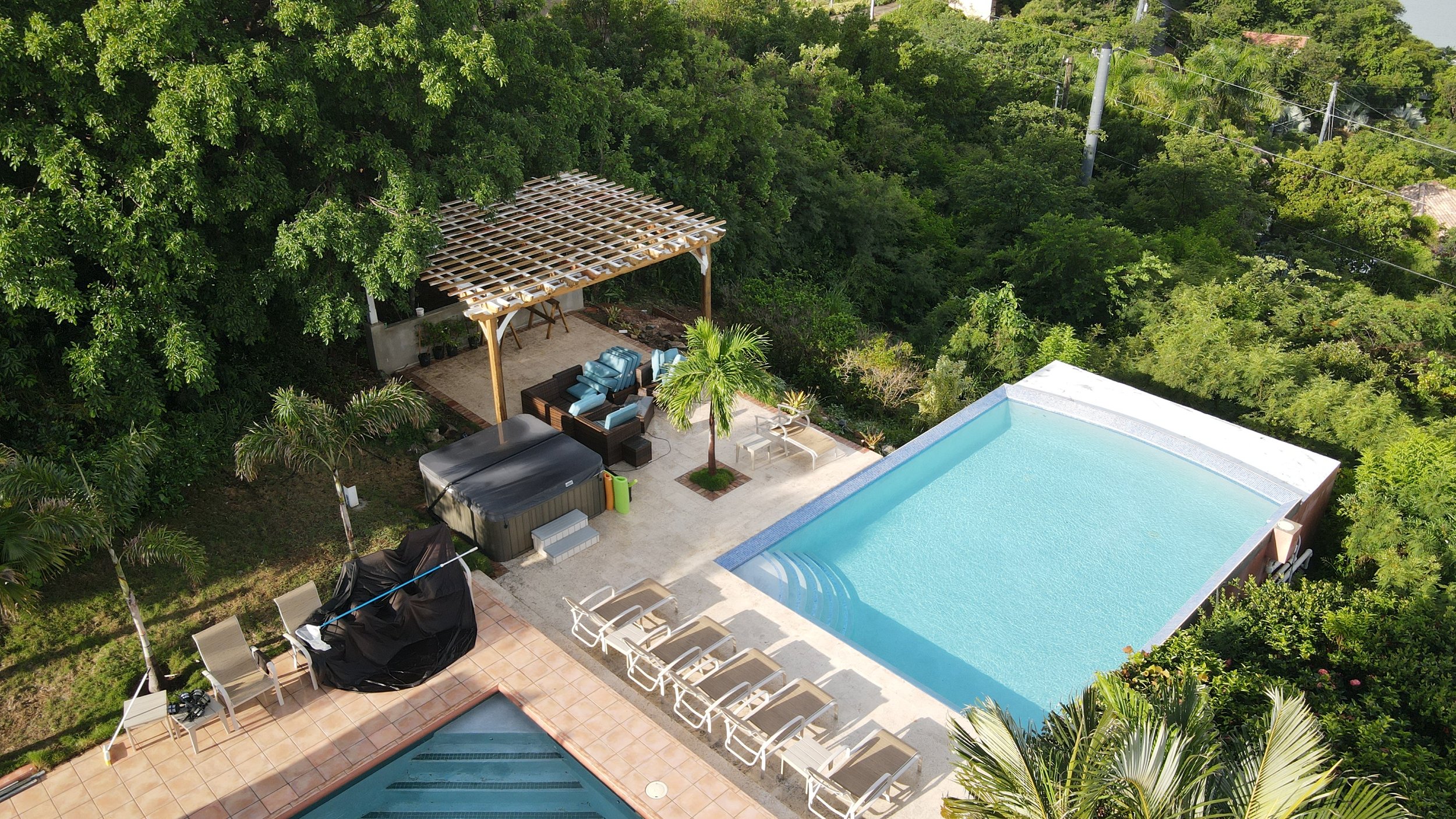 |
| The blue, blue sky was a perfect backdrop to capture this parrot |
Many people know that you can see parrot fish around St John and for sure a bar, restaurant, boat, or villa with the name 'parrot' in it but, not many know that we actually have wild parrots who visit us from time to time. This guy hung out on a wire by our house and seemed quite happy to have me take his picture.
We actually had 3 parrots that hung out on that wire most of one morning. I first noticed them after I heard a loud, squawking sound (not a pretty birdie call but, quite loud and could be somewhat annoying if around all day). I typically have seen them in the early morning hours. Where they hang out during the day I do not know!
 |
| Just hangin' out enjoying the view |
Have you seen parrots on St John? Where? When?




